by California Casualty | Safety |
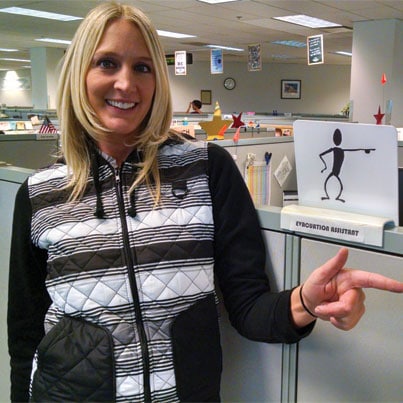
Today is America’s PrepareAthon, the culmination of FEMA’s National Preparedness Month. The idea is for individuals, communities and organizations to be prepared for six specific hazards:
The message is that families, businesses and neighborhoods should know their risks, have a plan of action and prepare survival kits.
It got us thinking; “How prepared is California Casualty?”
First, client and employee safety is paramount at California Casualty. Security systems are in place at all our service centers. The company conducts drills for fires and other possible occurrences – complete with trained safety personnel who help with evacuations and account for employees when safety zones are reached. These evacuation assistants are trained in first aid, CPR and the use of automatic electronic defibrillators (AED).
California Casualty has implemented a business continuity and recovery plan should an earthquake, flood, fire, tornado, power outage or winter storm adversely affect operations at one or more of our service centers. Managers carry contact information for every employee so they can be reached in an emergency. Systems are in place so that key personnel can operate remotely and phone and data systems can be shifted to service centers that have not been impacted. This minimizes inconvenience and potential disruption to policy holders.
Yearly table-top disaster scenarios are run to make sure managers know the procedures and backup systems they can utilize. In worse case scenarios, staff can be temporarily relocated to other services centers to maintain the continuity of service to clients. With service centers in Kansas, Colorado, Arizona and California, California Casualty has the redundancies and virtual call routing to maintain operations even if a service center is completely down.
California Casualty also has an emergency outreach plan for clients who may be affected by a disaster. Calls are made to areas that have been hit by flood, fire, tornado, hurricane or flood to make sure our insureds are okay and to expedite help with claims. Our Field Managers and Claims personnel respond to disaster areas to make contact with those insured with California Casualty and aid in their safety, relocation and recovery.
California Casualty works very hard to keep client information and data protected with numerous advanced data security protocols and monitoring. As an added layer of safety, every auto and home insurance policy includes free 911 ID Theft Protection.
Preventing tragedies is also a main concern. California Casualty strives to help our policy holders prepare for various disaster scenarios with many links and preparedness tips at our website’s Resources page.
Are you prepared? Today is the day to make sure with America’s PrepareAthon.
by California Casualty | Homeowners Insurance Info |

Ask anyone who has experienced a large earthquake; the experience is not fun. Walls shake, the earth rolls, and you have no control over what might happen for the next few seconds – or up to a minute – as the roller coaster continues. Californians are more aware after the recent temblor in Napa.
Now, there is more concern as the U.S. Geological Survey has expanded their maps of earthquake prone areas. The new mapping shows 42 states now facing a reasonable chance of a damaging quake within 50 years, with 16 sates facing a high risk of damaging ground movement. Those high risk states are Alaska, Arkansas, California, Hawaii, Idaho, Illinois, Kentucky, Missouri, Montana, Nevada, Oregon, South Carolina, Tennessee Utah, Washington and Wyoming.
Before a major shake “rocks your world,” Ready.gov has a comprehensive list of earthquake preparedness tips:
- Prepare an emergency kit, have an evacuation plan and determine how your family will communicate
- Fasten shelves securely to walls
- Make sure large or heavy items are on lower shelves and breakable items like bottles, glass and china are stored in low, closed cabinets with latches
- Repair defective electrical wiring or leaky gas connections and install flexible pipe fittings to avoid gas or water leaks
- Locate safe spots in each room under a sturdy table or against an inside wall
- Hold earthquake drills with your entire family
Safety is paramount after the shaking has subsided. The American Red Cross has a checklist of does and don’ts following an earthquake that include:
- Turn off water and gas main-lines to your dwelling
- Stay away from downed power lines and damaged structures
- Extinguish small fires
- Clean up spilled medications, bleach or other dangerous liquids
- Monitor updates with battery powered or hand-crank radios
- Offer help to those who might be trapped or need special assistance.
Once you are in a safe place, contact your insurance company. Keep in mind that earthquake damage is not a part of most people’s home insurance policy; separate earthquake coverage needs to be purchased. Earthquake insurance is available as an endorsement to California Casualty homeowners in California, Oregon, Missouri, Illinois, Kentucky and Rhode Island and California Casualty has partnered with GeoVera to underwrite earthquake insurance for homeowners in California, Oregon and Washington. If you need earthquake protection, call a California Casualty advisor today at 1.800.800.9410.
Sources for this article:
https://www.ready.gov/earthquakes
https://pubs.usgs.gov/of/2014/1091/
https://earthquake.usgs.gov/hazards/
https://www.redcross.org/prepare/disaster/earthquake
by California Casualty | Safety |
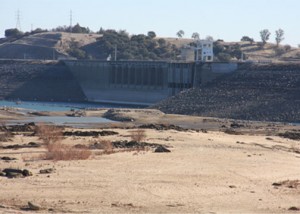
It is tinder dry in much of the Western United States – the driest conditions in over 100 years. It is so dire, California Governor Jerry Brown has declared a drought emergency. “These are perhaps the worst drought conditions that California has ever seen, since records (began) about 100 years ago.” Brown emphasized the importance of the inherent danger of the drought by adding, “This is an effort to call for arms. We can take this drought as a stark warning for other things to come.”
It’s not just California. Just this week (January 23) federal officials from the Department of Agriculture designated portions of 11 drought-stricken western and central states as primary natural disaster areas: Colorado, New Mexico, Nevada, Kansas, Texas, Utah, Arkansas, Hawaii, Idaho, Oklahoma and California. Officials warn the dry weather could mean an active fire season, as evidenced by the uncommon early blaze near Los Angeles.
Now is the Time to Protect Your Home from Wildfires
Fire experts say it is essential that property owners create buffer space around their homes and other structures. California Casualty has partnered with the Insurance Institute for Business and Home Safety (IBHS) to provide tips to make your home and property more resistant to wildfires. Ideally, this defensible space should be 30 to 100 feet away from your home.
- Remove leaves and needles from roof, gutters and yard
- Clear yard of any dead vegetation (plants, trees, shrubs)
- Place woodpiles, wooden picnic tables, wooden play structures and any other combustibles at least 30 feet from your home
- Maintain a clearance around your home of at least 30 feet to allow for fire equipment
- Remove any combustible materials from under decks or porches
Don’t be a statistic.
In 2012, nearly 70,000 wildfires burned 9.3 million acres and destroyed more than 2,100 houses in the U.S. Continuing drought conditions – particularly bad in the West – and higher-than-normal predicted spring and summer temperatures are setting the stage for another potentially devastating year of wildfires.
Fire safety and preparation are everybody’s responsibility. California Casualty is in the business of insuring your property, but actions you take now can reduce your risk from wildfires. Here is where you can get your Checklist.
by California Casualty | Firefighters |
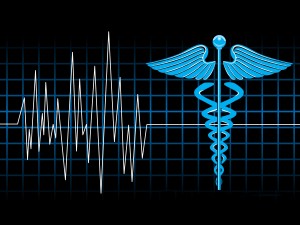
Technological advancements have made streamlining processes and optimizing operations possible universally, with the impact affecting the largest corporations all the way down to our daily lives. One area where the application of the latest technology is evident is in public safety, and in particular the help it provides first responders. Here’s a look at the benefits that technology provides for emergency responders — from greater intelligence to better communications.
Personnel Management and Automatic Vehicle Location Systems
Personnel systems and Automatic Vehicle Location (AVL) systems give first responders an instantaneous view of their personnel, vehicles and medical equipment. Through the use of technology, a real-time status of the entire operation allows first responders to track down equipment, make decisions on dispatching personnel and know immediately if any areas are understaffed.
Intelligence and Computer-Aided Dispatch
A main theme behind the implementation of technology in the vehicles and dispatch offices of EMTs and first responders is eliminating paperwork. When first responders are bogged down in paperwork, they cannot properly focus on their efforts to provide response to emergencies quickly and effectively. Computer-Aided Dispatch (CAD) systems digitize the act of managing incidents, allowing individuals to enter them into a management system from dispatch or from vehicle-mounted computers.
Within this system, there is a running account of what’s happening, enabling quick decisions. This data can also be pushed into a records management system (RMS). With an archive of events, CAD systems can run reports and first responders can leverage the intelligence gleaned for a more effective response strategy in the future.
Electronic Patient Care Reporting
Electronic Patient Care Reporting (ePCR) is a reporting and filing system for first responders for managing the medical side of the operation, rather than the logistical side. No longer do emergency personnel have to worry about misplacing or throwing out important medical records. These systems are also more secure than a paper filing system and allow personnel to quickly file reports and return to work immediately.
Mass Notification Systems
The prevalence of cell phones and social media have given first responders an advantage when it comes to receiving calls, including civilian distress applications. Civilian distress applications can be downloaded onto a smartphone, and used to notify the public, law enforcement, or medical personnel of an event. Early responders can utilize these apps like they are accepting 911 calls. By doing so, they stand to reduce call qualification time by using GPS to pinpoint exactly where the distress call is coming from. The caller’s identity can also be determined, further reducing time to intervention.
Cell phone prevalence also brings with it social media, as many smartphone owners regularly use their favorite social media apps on their phones. Monitoring social media can give early responders information on events, enabling the proper planning and decision-making on the go. Additionally, social media acts as a useful platform for public safety announcements.
Technology in the right hands is a wonderful thing, and it’s even better when technology is put to good use. With advances in technology in public health, first responders are leveraging their intelligence and improving communications, which is leading to better response and, overall, more lives saved.
Author Bio:
Cheryl Bikowski is Marketing Communications Supervisor of Gamber-Johnson in Stevens Point, WI. Gamber-Johnson is a leading supplier of vehicle docking stations and vehicle computer mounts and is a member of the Leggett & Platt Commercial Vehicle Products (CVP) Group.
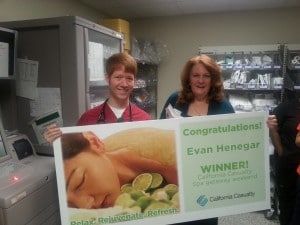
by California Casualty | Nurses |
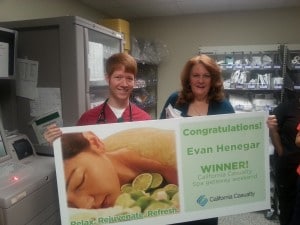
Two-and-a-half years of working three, 12-hour shifts in one of Alabama’s busiest hospitals can take its toll. Now Evan Henegar, an RN at the University of Alabama Birmingham (UAB) Hospital is planning a trip to ease that stress. Evan was randomly picked as the grand prize winner of California Casualty’s “Give A Nurse A Break” contest, from more than 11,000 entrants across the nation. Evan, his wife and two co-workers will soon be embarking on a scrumptious getaway to the world-famous Chocolate Spa® at The Hotel Hershey® in Hershey, PA. The all-expenses paid trip for four has a value of $5,500.
Henegar graduated from the University of Alabama Birmingham with a nursing degree. He is now a general medicine nurse. “We get every patient you can imagine, from a broken leg, surgery or cardio. We do total patient care from baths, dispensing medicine to assessments,” he said. Henegar says it’s all great training and experience for his next assignment, Emergency and Trauma. UAB is the only recognized level I trauma center for the State of Alabama.
Henegar got turned onto California Casualty’s “Give A Nurse A Break” contest by a co-worker who told him to check it out on Facebook. “I can’t believe my luck; I am just so appreciative and grateful.”
“Often times, nurses aren’t always appreciated for the incredibly hard work they do,” said California Casualty Vice President, Mike McCormick. “This is just one way we can say ‘Thank you and we appreciate you.’”

Previous winner, Lisa Gordon, LPN, from Victoria Texas experienced her spa getaway in October. “I love what I do….and I am so excited and amazed that I won this trip from California Casualty just for being a nurse!” she exclaimed as she and two of her closest friends luxuriated at The Hotel Hershey® and Spa. Gordon is currently continuing her education to obtain her RN.
You could win the next “Give A Nurse A Break” grand prize getaway. Click for more information on full contest rules and how to enter.







